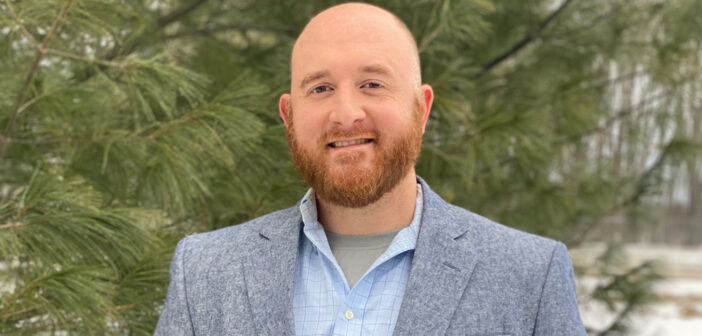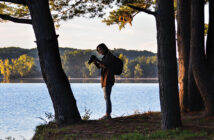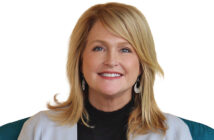In early February, Patrick Scanlon assumed a new role as Executive Director of the Flint River Watershed Coalition (FRWC).
Most recently, Scanlon served as the Cooperative Invasive Species Management Area (CISMA) Coordinator at the Genesee Conservation District where he provided invasive species education and outreach to four counties that intersect the Flint River watershed. He is also a past Flushing City Council member and serves on the Flushing City Parks and Recreation Committee.
To his new position, Scanlon brings extensive environmental knowledge and a deep passion for conserving Michigan’s natural resources. An avid kayaker, he earned a B.S. in Wildlife Biology at UM-Flint.
In addition to overseeing day-to-day operations, Scanlon will also lead fundraising, strategic partnerships and community engagement initiatives. It will be a busy year for the FRWC as it prepares to move to a new location at the confluence of the Swartz Creek and Flint River later this year.
The FRWC is a membership organization that promotes citizen stewardship of our natural resources by providing members with the resources necessary to protect local water quality and watershed habitat. With Scanlon at the helm, they are excited to further advance their mission.
In this feature, My City readers get a bit “up close and personal” with Patrick Scanlon.
1. What was your very first job?
My very first job was at a local grocery store. I worked primarily as a cashier but also pitched in on other day-to-day duties. It was a great first job and it taught me a lot about responsibility and working together as a team. I still shop there, too, and always think about when it was me on the other side of the cash register some 20 years ago.
2. Do you hit the snooze button or wake up immediately?
I am an up-and-out-of-bed kind of person. Falling back asleep is not an option because I am immediately thinking about everything I have to do. Plus, I look forward to my morning mug of matcha to help get me going.
3. When you were a kid, what did you want to be when you grew up?
At an early age, I had fallen in love with the natural world around me and wanted to incorporate that into my future whether it be as an occupation or otherwise. My family has always nurtured my strong interest in wildlife and one Christmas, I received a book detailing all of Michigan’s wildlife. I spent hours studying the masterfully drawn pictures and descriptions of things that I might spy upon if I kept searching my surroundings. And I never stopped looking. When I was around eight years old, my grandma bought me a used microscope at a garage sale and opened my eyes to a whole new world. I never grew tired of riding my bike around the neighborhood to collect samples of pond and ditch water to see what myriad of creatures were living in these microcosms. At some point, I decided I wanted to be a scientist. I now think that being a scientist isn’t necessarily just an occupation, but a way of life. We can all be scientists in our own way based on how we look at and interact with the world around us.
4. What do you do to keep fit?
I try to hike and kayak as much as possible. Much like the younger version of me, I want to get out into the world and see as much as I can. I want to look under every rotting log I come across and inspect the creatures under the river rocks. I also thoroughly enjoy spending time with my four-year-old niece. Even though it may look like she’s trying to keep up with me, I’m the one trying to keep up with her seemingly unending energy! I like showing her the natural world that first caught my attention at her age. Catching salamanders, observing bugs, inspecting mushrooms and overturning logs to see what else we may spy is immensely rewarding as I witness her reactions to seeing some of these things for the very first time. Being a naturalist can burn some serious calories, especially with a young enthusiast in tow! My garden, however, is the ultimate zen for me. Starting seeds, tending to the plants and bringing them to fruition is amazingly rewarding for me and a welcome escape from daily stress.
5. What’s one work-related thing you want to accomplish in the next year?
I hope to accomplish a lot! I am incredibly excited to be guiding such a wonderful organization and the incredible group of people who are my staff. I have said that I feel like I have been given the keys to a brand-new speed boat and once I figure out how to drive it, we are going to make some waves! One thing I would like to accomplish is to not only maintain the organization’s success and momentum, but also build upon it to reach more of the communities within the entire Flint River Watershed and expand our connection with people of all ages and walks of life. We have our Kayak Flint program which gets people out on the river, our educational programs which bring amazing resources and lessons to classrooms, and our various events which give people an opportunity to get involved and support the FRWC.
6. Aside from necessities, what one thing could you not go a day without?
The biggest thing for me is technology – whether that is my phone, computer, tablet, or even the TV. I can connect to news releases and research articles, interesting documentaries and even my friends and family who make up my support group. Technology and the internet are incredibly valuable tools that I think we sometimes fail to appreciate. As a kid, I had a handful of books that showed me the wildlife around me, and now I have a computer in my pocket that I can take pictures with and an app that can identify what I’m looking at while also sharing it with the rest of the world. It has become a big part of my daily life; so much so that I find it is important to take time to disconnect from it at times and appreciate that which exists beyond the screen.
7. If you had a warning label, what would it say?
It would probably read something like “WARNING: I WILL TELL YOU MORE THAN YOU CARE TO HEAR ABOUT INVASIVE SPECIES!” In my previous position at the Genesee Conservation District, I spent three years helping to educate the community about invasive species. I still feel the need to tell people they have Phragmites creeping into their yard, or that they should remove the Japanese barberry plants from their landscaping. If at any point they dare ask why, then I unleash loads of information as to why these plants are harmful and how they can remove them. I am that guy who has no issue with shaming his friends and family for intentionally planting known invasive species in their yards. And have you heard of spotted lanternfly? Let me tell you about this invasive insect you are likely to encounter in Michigan in the future …








